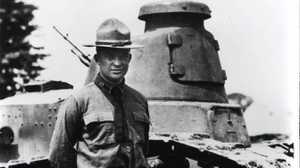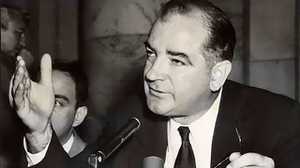Domestic Politics under Eisenhower
The post-war years of 1950s America are typically described as being a period of economic prosperity and technological advances. Indeed, the nation's Gross National Product (GNP) more than doubled, jumping from $212 billion in 1945 to $504 billion in 1960. Likewise, increases in per capita income and real purchasing power were enjoyed by most Americans. The United States had become the richest nation in the world. Many of her citizens, weary from the hardships of the Great Depression and World War II, eagerly embraced the seemingly endless bounty. Freshly built suburban homes were filled with the latest technological gadgets as consumers raced to join what economist John Kenneth Galbraith called the "affluent society."

But all was not well for African Americans in the 1950s. Millions had returned home from World War II to find themselves excluded from the American dream. In an age of rising expectations, African Americans voiced their demands for a fair share of the prosperity and promise that seemed to envelope much of the nation. Calling attention to the inferior quality of their children's education, they challenged the notion of a "separate but equal" educational system. Equality of education, most African Americans concluded, could only be assured through integration.
Like most Americans of the day, Dwight Eisenhower had moved through his life in a largely segregated society. The Abilene of his boyhood years counted no African Americans among its citizens. West Point was likewise devoid of people of color. And Ike's entire military service, from 1915 to 1948, had been in a segregated army. Nevertheless, Eisenhower spoke publicly about his belief in equal opportunity for all and during his first term had ordered desegregation of all public facilities in Washington, DC. But personally, he was sympathetic toward many Southern segregationists.
In 1954, the Supreme Court handed down a ruling that would force the issue of racial segregation into the forefront of the American consciousness.
In Brown v. Board of Education of Topeka, Kansas the court unanimously ruled that the establishment of "separate but equal" institutions -- including public schools -- was unconstitutional. The court's ruling provoked angry resistance in many Southern school districts.
While refusing to comment publicly on Brown v. Board of Education, Eisenhower made it clear that he would uphold the Constitution. Violent protests erupted in Tennessee and Texas as issues of states' rights collided with the Constitutional mandate. In September 1957, Arkansas governor Orval Faubus ordered troops from the state National Guard to surround Central High School in Little Rock to prevent nine African American students from enrolling.

Eisenhower made clear that he would put his personal feelings aside to enforce the law. The President declared, "The Supreme Court has spoken and I am sworn to uphold the constitutional processes in this country -- I will obey." Still, Eisenhower hoped to avoid direct federal intervention in the affairs of Arkansas. He summoned Governor Faubus to meet with him and informed him that he could not hope to win in a showdown with the United States government. Eisenhower felt confident that he and Faubus had reached an agreement. He was mistaken. Upon returning to Little Rock, Faubus kept the state National Guard at the high school. When a federal judge ordered him to refrain from interfering with desegregation of the school, Faubus removed the Guard, leaving only the local police to fend off an angry, violent mob. The police were able to safely remove the nine students, but the chaos continued.
With Little Rock streets teeming with raucous mobs numbering in the thousands, Mayor Woodrow Wilson Mann sent an urgent telegram to the White House requesting federal troops to restore order. Eisenhower, whose legend was forged by decisive action, found himself being attacked in the press for allowing the situation to spin out of control. In a nationally broadcast television address, Eisenhower informed the nation he had ordered federal troops into Little Rock to secure the law. Ike emphasized that his sole intent was to uphold the Constitution -- he did not believe in forced integration.
On September 24, 1957, one thousand members of the 101st Airborne Division arrived in Little Rock to disperse the angry mob and escort the nine African American students in to the school. White segregationists described the action as an "invasion."
Eisenhower characterized the situation in Little Rock as being "troublesome beyond imagination," and would count the day he sent troops there as among his saddest.







